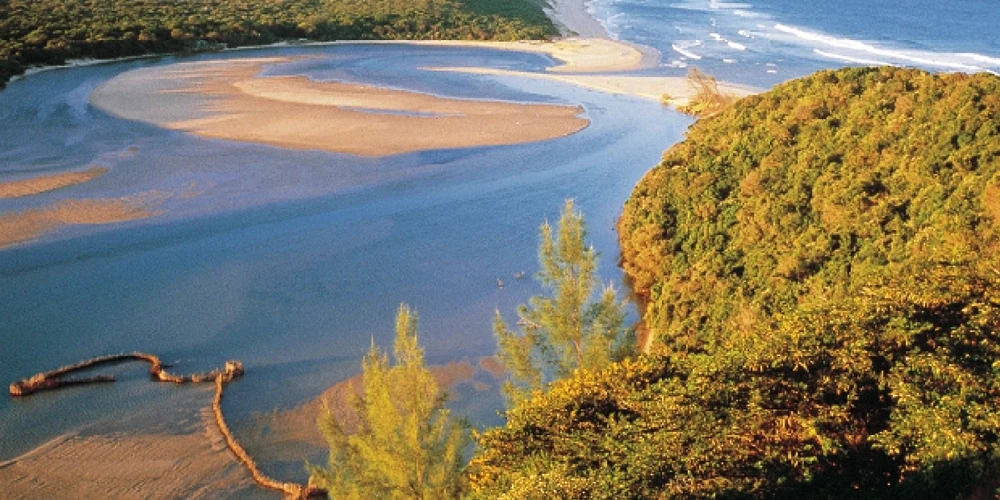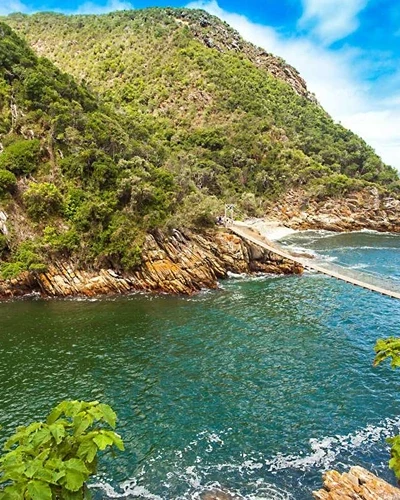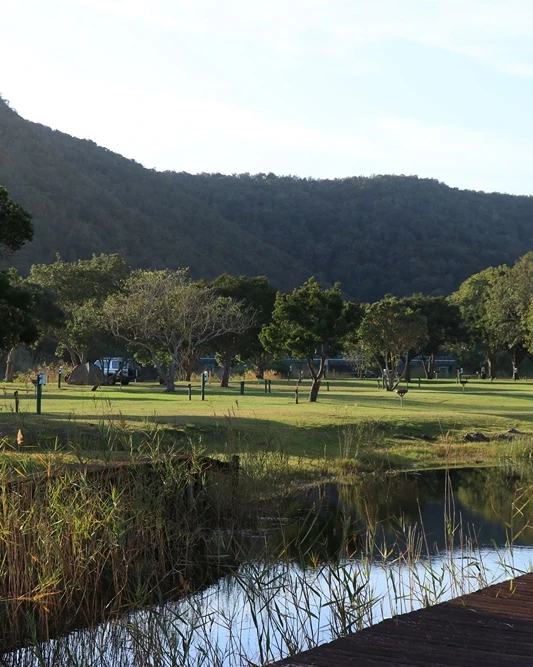Have you ever wondered what it would be like to explore one of the most diverse and expansive natural wonders in Africa? Nestled just north of St. Lucia, iSimangaliso Wetland Park spans 220 kilometers of pristine coastline. This UNESCO World Heritage Site is not only the largest Marine Protected Area in the country but also home to South Africa’s largest estuary. Dive into our comprehensive guide to discover why this park is a must-visit destination, offering unparalleled experiences and breathtaking biodiversity.
Exploring iSimangaliso Wetland Park: An Overview
iSimangaliso Wetland Park, the second largest protected area in South Africa, is located just north of St. Lucia. Spanning 220 kilometers of coastline, the park encompasses a diverse array of ecosystems. It boasts the country’s largest Marine Protected Area and the largest estuary in South Africa, making it a crucial site for both marine and terrestrial biodiversity. The park’s geography includes coastal dunes, coral reefs, swamps, and savannas, each supporting unique flora and fauna.
| Feature | Description |
| Location | North of St. Lucia, South Africa |
| Size | 220 kilometers of coastline |
| Marine Protected Area | Largest in South Africa |
| Estuary | Largest in South Africa |
The significance of iSimangaliso Wetland Park extends beyond its size and diversity. As a UNESCO World Heritage Site, it serves as a global beacon for conservation efforts and sustainable tourism. The park supports numerous endangered species and plays a pivotal role in scientific research, education, and local community livelihoods.
The Rich History of iSimangaliso Wetland Park
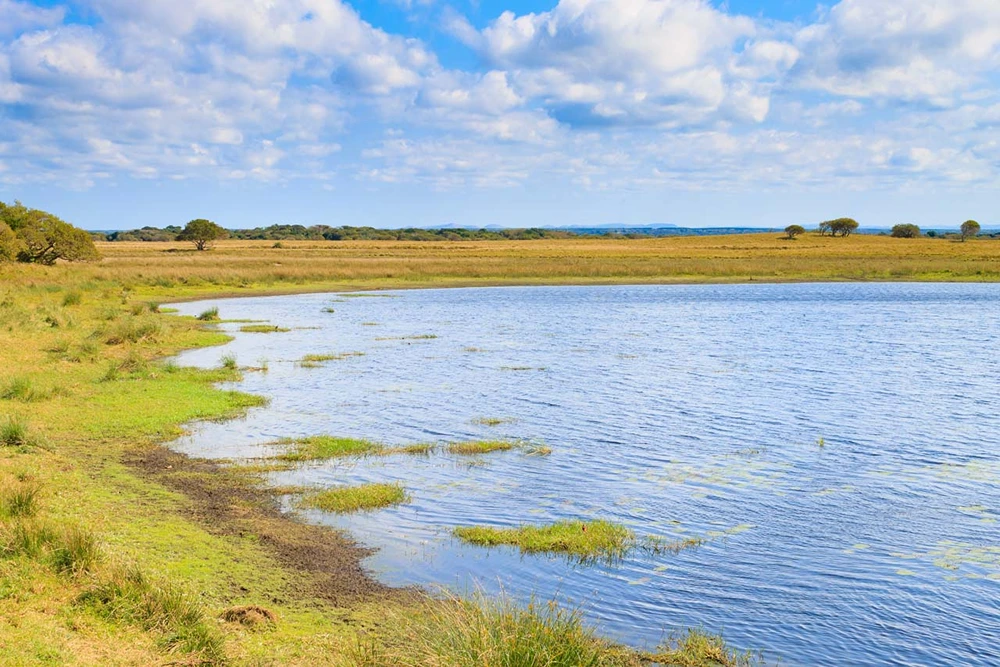
iSimangaliso Wetland Park, recognized for its unique ecosystems and biodiversity, was declared a UNESCO World Heritage Site in 1999. This designation highlighted the park’s global significance and its role in conservation. Covering an array of ecosystems from coastal dunes to coral reefs, the park has a rich cultural history deeply connected to indigenous communities who have inhabited the area for centuries. These communities have contributed to the park’s preservation and continue to play a crucial role in its ongoing protection and management.
- 1999: Declared a UNESCO World Heritage Site
- 2000: Initiation of major conservation projects
- 2004: Expansion to include additional marine areas
- 2010: Establishment of community-based conservation programs
- 2020: Recognition for outstanding conservation efforts
The cultural significance of iSimangaliso Wetland Park is immense. Indigenous people have long considered the park’s landscapes and ecosystems sacred. Their traditional knowledge and practices have helped maintain the ecological balance of the region. The park serves not only as a natural wonder but also as a living testament to the harmonious relationship between humans and nature.
Wildlife and Ecosystems of iSimangaliso Wetland Park
iSimangaliso Wetland Park hosts a remarkable variety of terrestrial wildlife. The park boasts around 1,200 hippos and 2,000 crocodiles, which thrive in its extensive wetland areas. Elephants, buffalo, and various antelope species can be found roaming the savannas and woodlands. The park’s diverse habitats also support an array of smaller mammals, reptiles, and insects, contributing to a complex and vibrant ecosystem.
The marine life in iSimangaliso Wetland Park is equally impressive. The Indian Ocean marine ecosystem within the park includes coral reefs that are home to hundreds of fish species. Zambezi sharks, dolphins, and sea turtles are commonly seen in these waters. The coral reefs themselves are living structures that provide crucial habitats for marine organisms, making the park a significant site for marine biodiversity.
Bird enthusiasts will find iSimangaliso Wetland Park a paradise. The park supports a wide range of bird species, including both resident and migratory birds. Wetland areas are particularly rich in birdlife, with species such as pelicans, flamingos, and herons frequently spotted. Forested regions and open savannas also host various raptors, songbirds, and ground-dwelling birds, offering excellent opportunities for bird watching.
- Hippos
- Crocodiles
- Elephants
- Zambezi sharks
- Sea turtles
- Pelicans
- Flamingos
Popular Activities at iSimangaliso Wetland Park
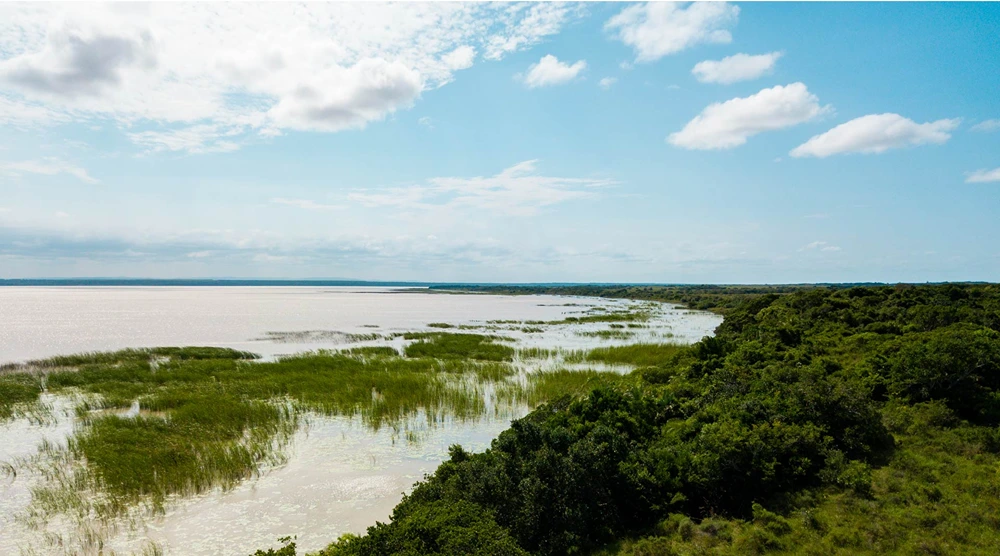
iSimangaliso Wetland Park offers a variety of land-based activities that cater to nature enthusiasts and adventure seekers alike. Hiking trails meander through diverse landscapes, ranging from coastal dunes to thick forests, providing opportunities to explore the park’s rich biodiversity. Safari tours are another popular option, allowing visitors to observe wildlife such as elephants, hippos, and various antelope species in their natural habitats. Bird watching is a favorite pastime, with numerous vantage points for spotting both resident and migratory birds. Cape Vidal Beach is a must-visit for those looking to relax or swim in the warm Indian Ocean waters.
Water-based activities are equally enticing at iSimangaliso Wetland Park. Snorkeling in the park’s coral reefs reveals a vibrant underwater world teeming with marine life, including colorful fish and sea turtles. Boat cruises on Lake St. Lucia provide a unique perspective of the park’s wetlands and the chance to see hippos and crocodiles up close. Kayaking and fishing are also available for those who prefer a more hands-on aquatic experience.
- Hiking trails
- Safari tours
- Bird watching
- Swimming at Cape Vidal Beach
- Snorkeling in coral reefs
- Boat cruises on Lake St. Lucia
Visitor Information for iSimangaliso Wetland Park
Entrance fees to iSimangaliso Wetland Park vary depending on the season and the type of access visitors require. For a standard day visit, adults can expect to pay around ZAR 50, while children pay approximately ZAR 25. During peak seasons, such as school holidays and long weekends, prices may increase slightly. For those interested in extended stays or special activities like guided tours, additional fees may apply. It’s advisable to check the latest pricing on the park’s official website before planning your trip.
Accommodation options within and around iSimangaliso Wetland Park cater to a range of budgets and preferences. Visitors can choose from budget-friendly beach cabins, mid-range guesthouses, and luxurious lodges. For a more immersive experience, several campsites are available for those who prefer to bring their own tents or caravans. Additionally, nearby towns such as St. Lucia offer a variety of accommodations, providing further flexibility and convenience for park visitors.
The best time to visit iSimangaliso Wetland Park is during the dry season, which extends from May to September. During these months, the weather is generally pleasant, and wildlife is easier to spot as animals gather around water sources. The dry conditions also make it ideal for outdoor activities like hiking and bird watching. Conversely, the wet season, from October to April, brings lush landscapes and fewer tourists but can also result in challenging weather conditions and limited accessibility to certain areas of the park.
- Plan your visit during the dry season for optimal weather and wildlife viewing.
- Check the park’s official website for the latest entrance fees and any seasonal changes.
- Book accommodation in advance, especially during peak seasons.
- Consider staying in nearby towns like St. Lucia for additional lodging options.
- Bring appropriate gear for outdoor activities, including sunscreen, insect repellent, and comfortable hiking shoes.
Conservation and Environmental Impact of iSimangaliso Wetland Park

iSimangaliso Wetland Park plays a critical role in conservation, focusing on protecting endangered species and preserving unique ecosystems. The park’s conservation projects include habitat restoration, which seeks to rehabilitate areas affected by human activities. Anti-poaching measures are robust, with patrols and technology used to safeguard wildlife from illegal hunting. Additionally, the park engages in scientific research to monitor biodiversity and develop effective conservation strategies. These efforts are crucial for maintaining the park’s status as a UNESCO World Heritage Site and ensuring that its diverse ecosystems remain intact for future generations.
Community involvement is another cornerstone of iSimangaliso Wetland Park’s conservation strategy. Local communities are actively engaged in various programs aimed at sustaining biodiversity. These initiatives not only provide employment opportunities but also educate residents about the importance of conservation. The park’s ecological significance extends to its role in supporting endangered species such as the leatherback turtle and the rhino. By involving the community, the park fosters a sense of ownership and responsibility towards environmental stewardship, making conservation a collective effort.
- Habitat restoration
- Anti-poaching measures
- Scientific research and monitoring
- Community education and involvement
- Protection of endangered species
Reviews and Testimonials from iSimangaliso Wetland Park Visitors
Visitors to iSimangaliso Wetland Park often highlight its breathtaking landscapes, diverse wildlife, and serene beaches. Many reviews praise the park for offering an immersive experience that combines natural beauty with opportunities for adventure. Notable mentions include encounters with hippos and the tranquility of secluded beach areas, which leave lasting impressions on those who visit.
- “We saw hippos up close on a boat tour, which was the highlight of our trip. The guides were knowledgeable and made the experience unforgettable.”
- “The diversity of ecosystems is mind-blowing. From savannas to coral reefs, every corner of the park offers something unique.”
- “Cape Vidal Beach is a hidden gem. It was so peaceful, and the snorkeling was fantastic. We even spotted a sea turtle!”
- “Staying at one of the lodges was a great decision. Waking up to the sounds of nature and seeing wildlife right outside our window was magical.”
Visitors interested in sharing their own experiences can do so through various platforms, including the park’s official visitor center and online travel forums. Providing feedback not only helps future visitors but also contributes to the ongoing improvement and preservation of this natural wonder.
Final Words
Exploring iSimangaliso Wetland Park reveals its incredible biodiversity, significant historical roots, diverse wildlife, and engaging activities. The park stands out as a premier travel destination with abundant opportunities for land and water-based adventures.
Conservation efforts enhance its ecological value, ensuring the protection of endangered species. Visitor reviews consistently praise the park’s beauty and unique experiences.
iSimangaliso Wetland Park embodies the essence of natural wonder and cultural heritage. Plan your visit to experience this exceptional South African treasure firsthand.
FAQ
iSimangaliso Wetland Park Photos
iSimangaliso Wetland Park Activities
iSimangaliso Wetland Park Information
iSimangaliso Wetland Park Tickets
iSimangaliso Wetland Park History
Wildlife in iSimangaliso Wetland Park
Interesting Facts about iSimangaliso Wetland Park
- It is South Africa’s second-largest protected area.
- Home to the country’s largest estuary.
- Includes the largest Marine Protected Area in South Africa.
- Hosts around 1,200 hippos and 2,000 crocodiles.
- Declared a World Heritage Site in 1999.
Top Attractions
Think you’ve seen all that South Africa's nature has to…
Ever wondered where you can find rivers, beaches, forests,…
Are you ready to uncover the secrets of one of Egypt’s most…


